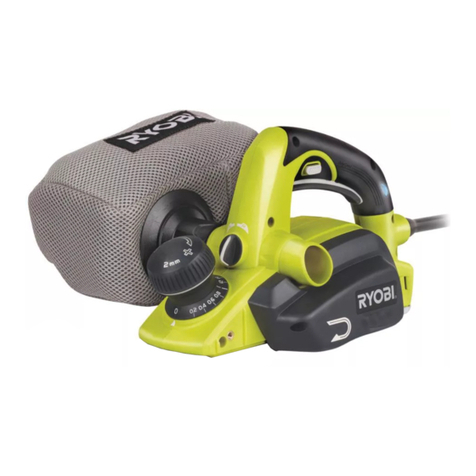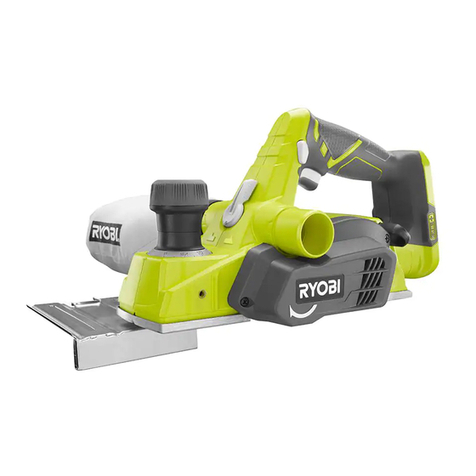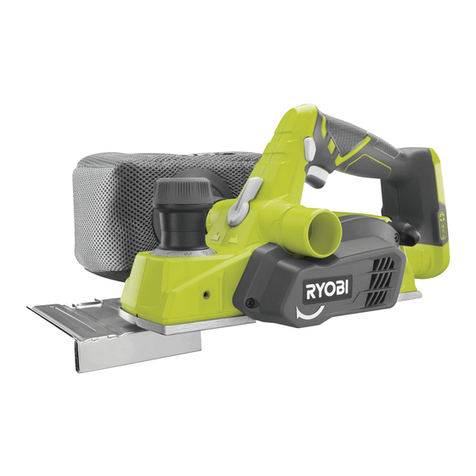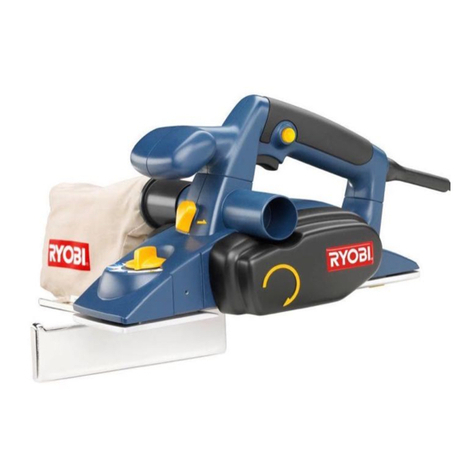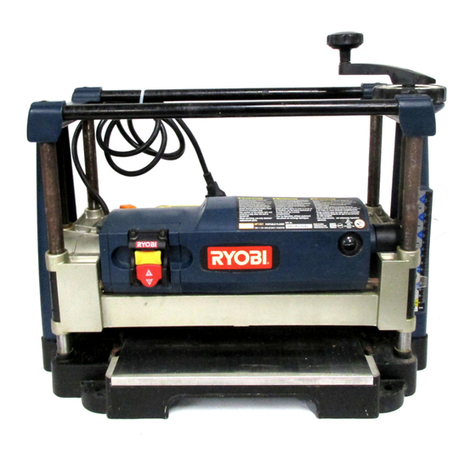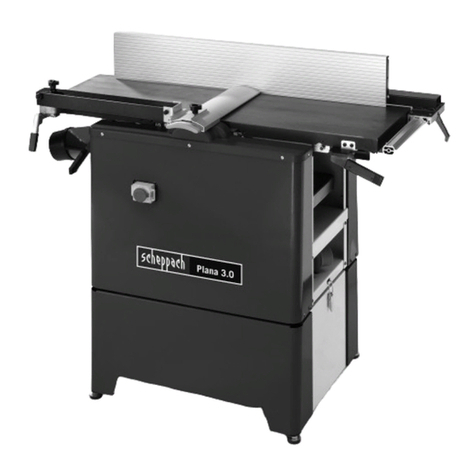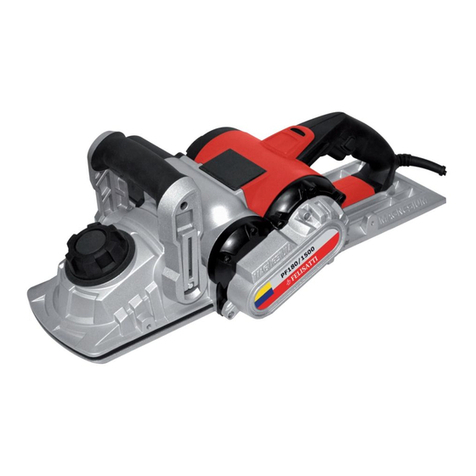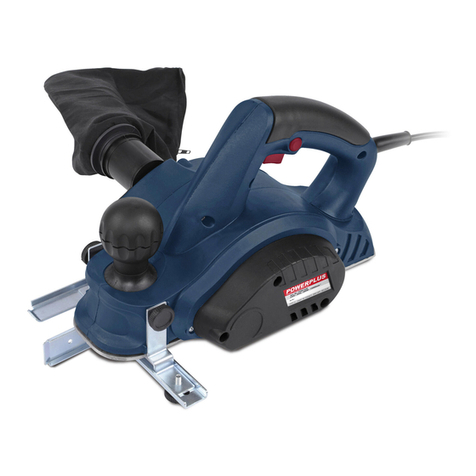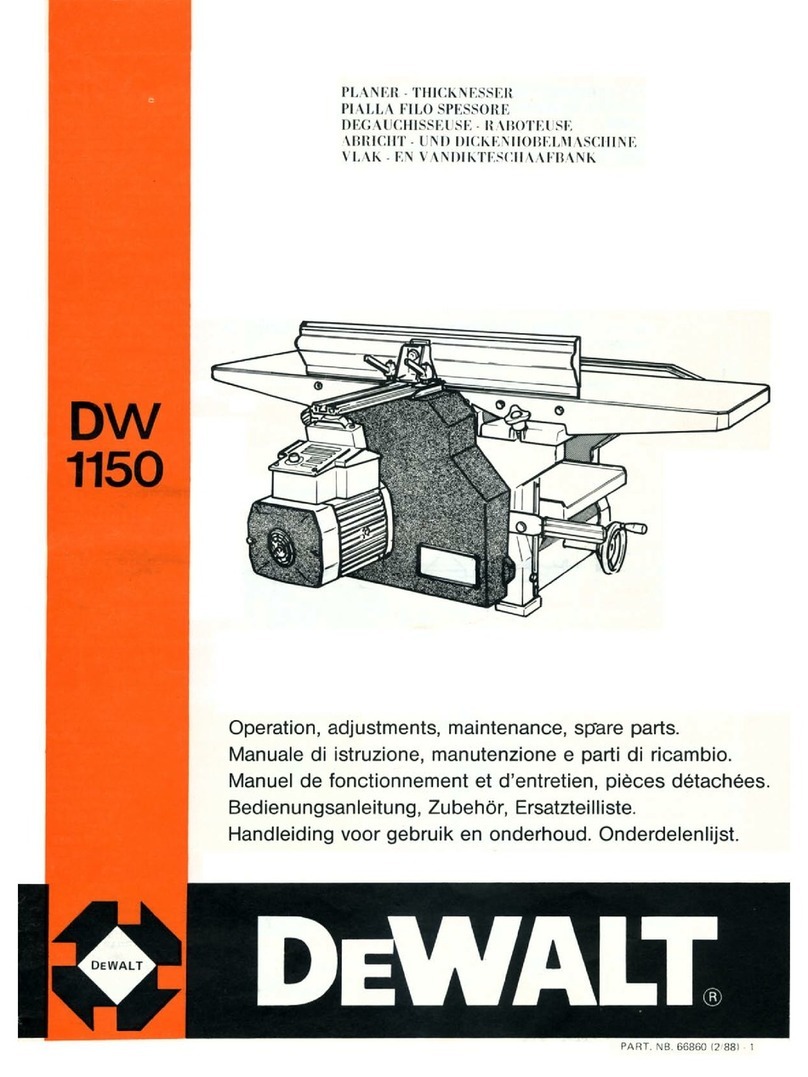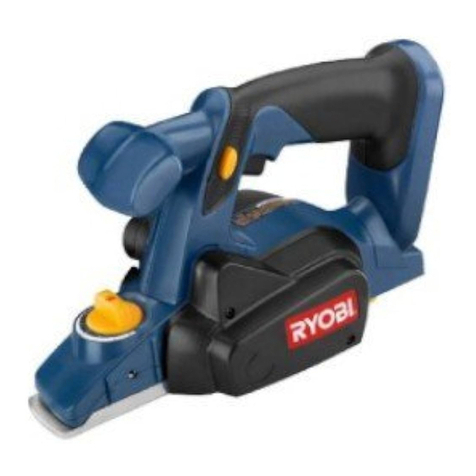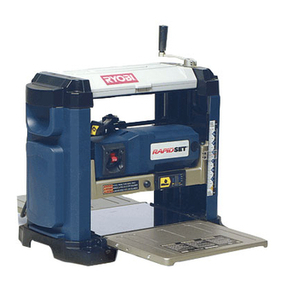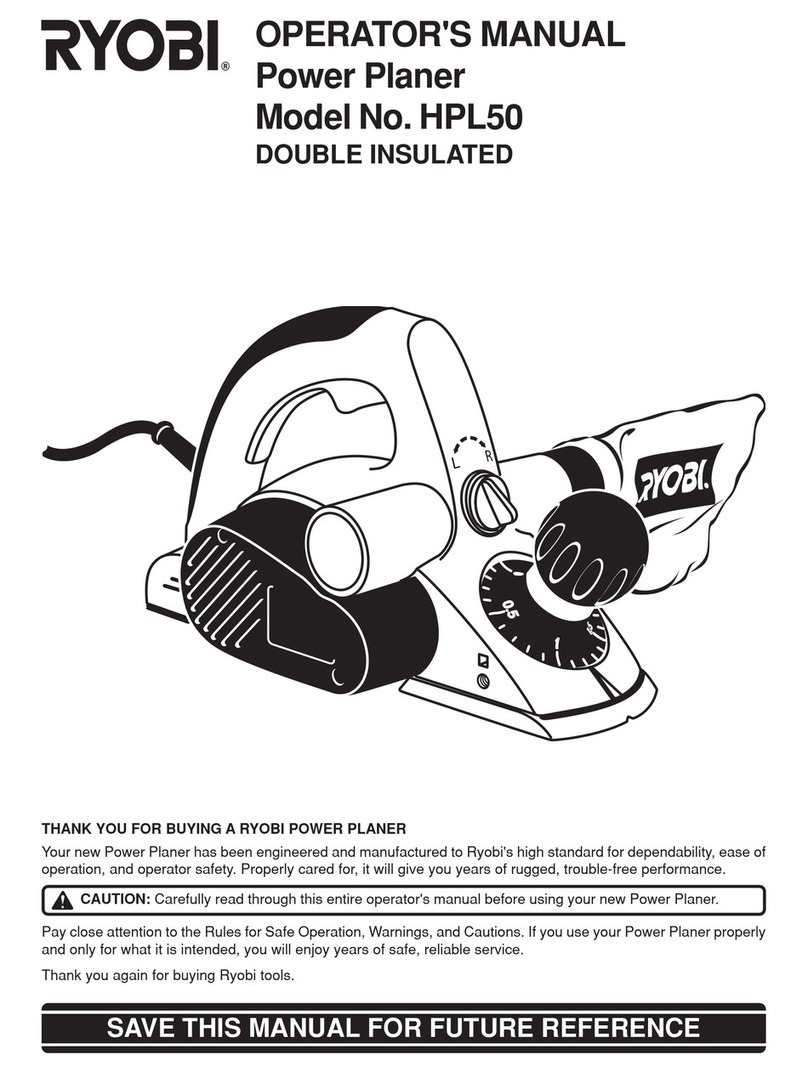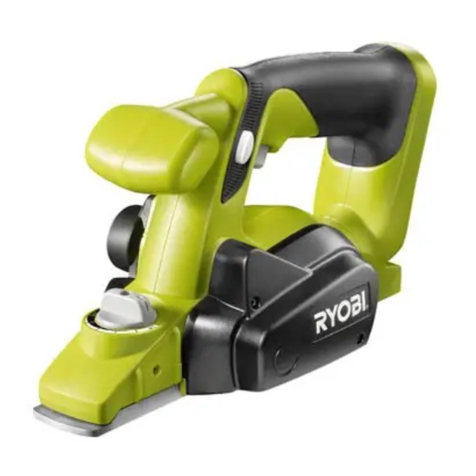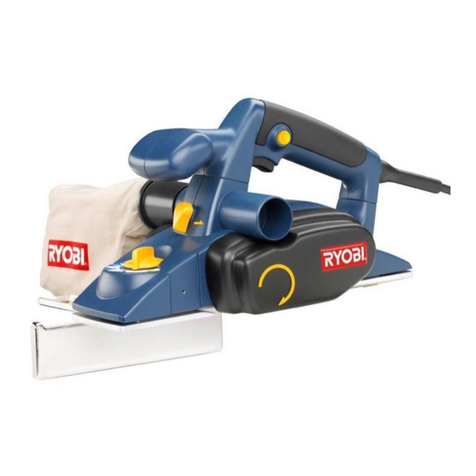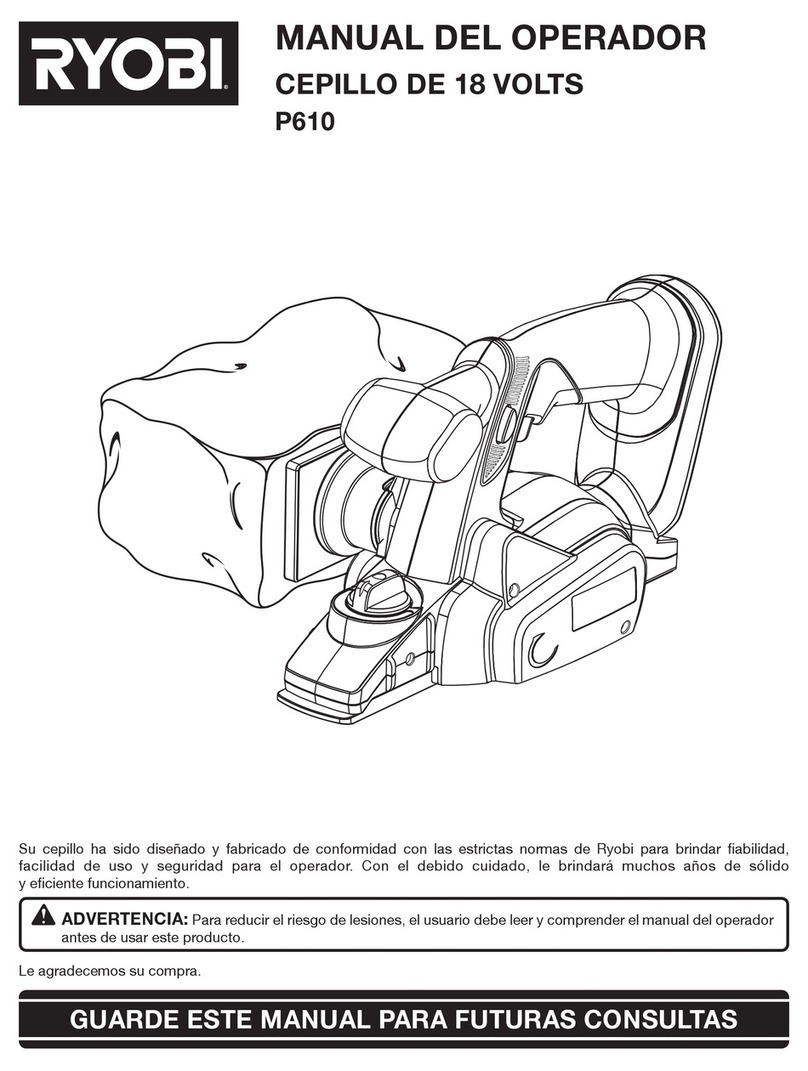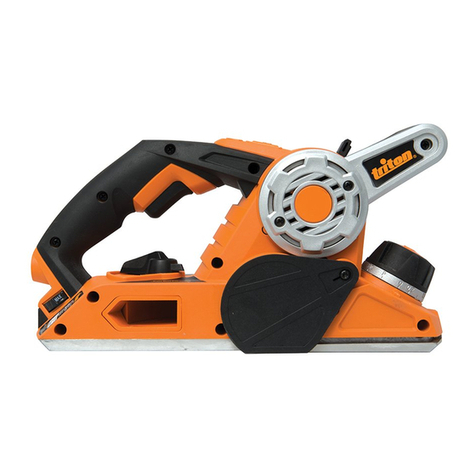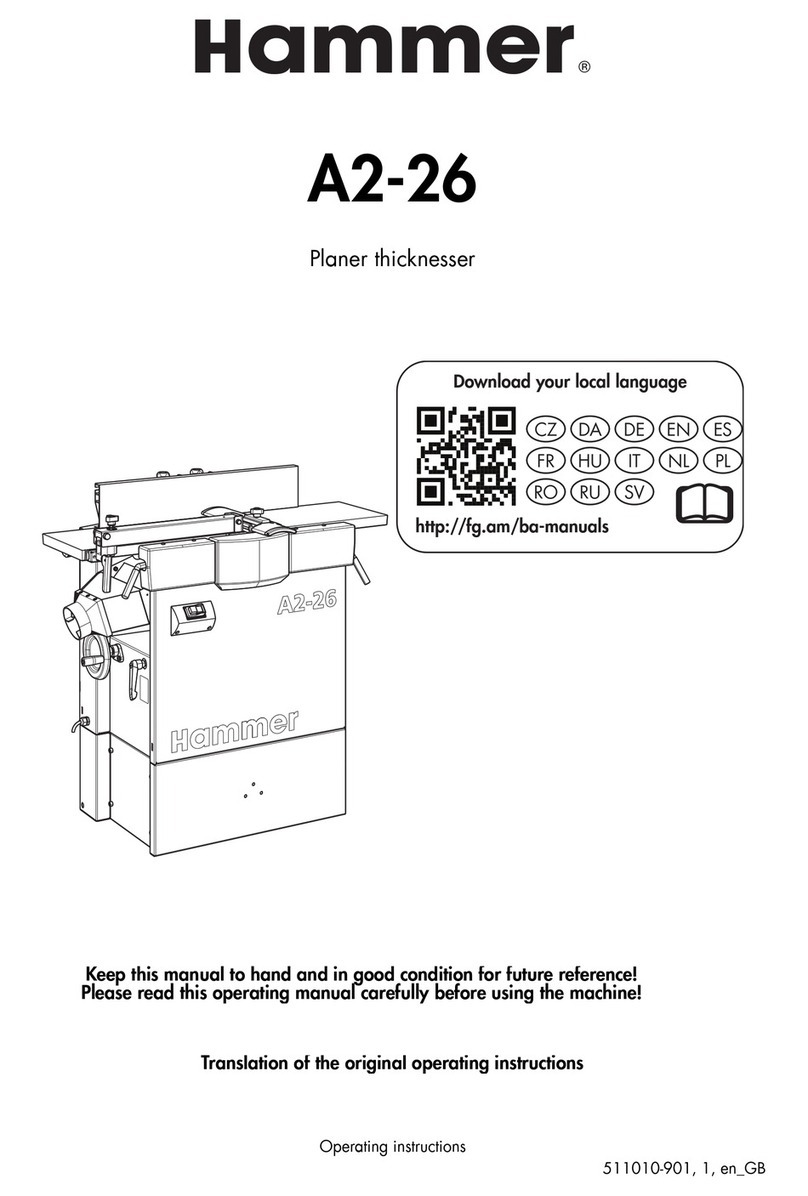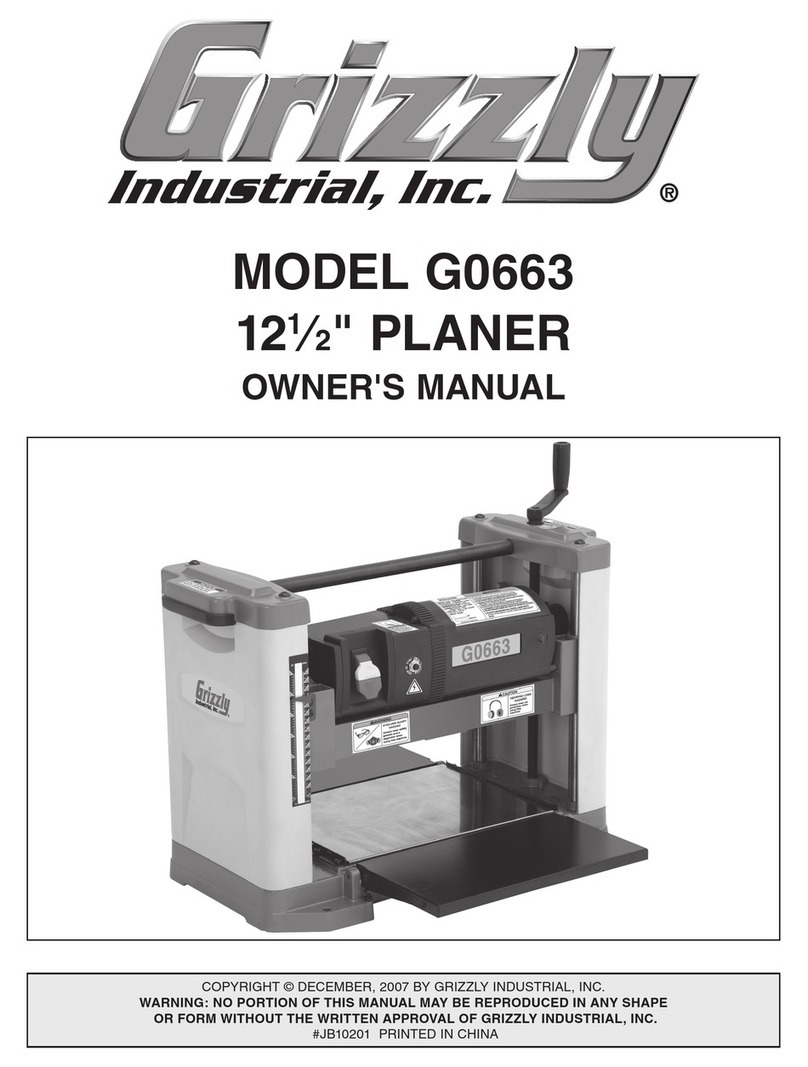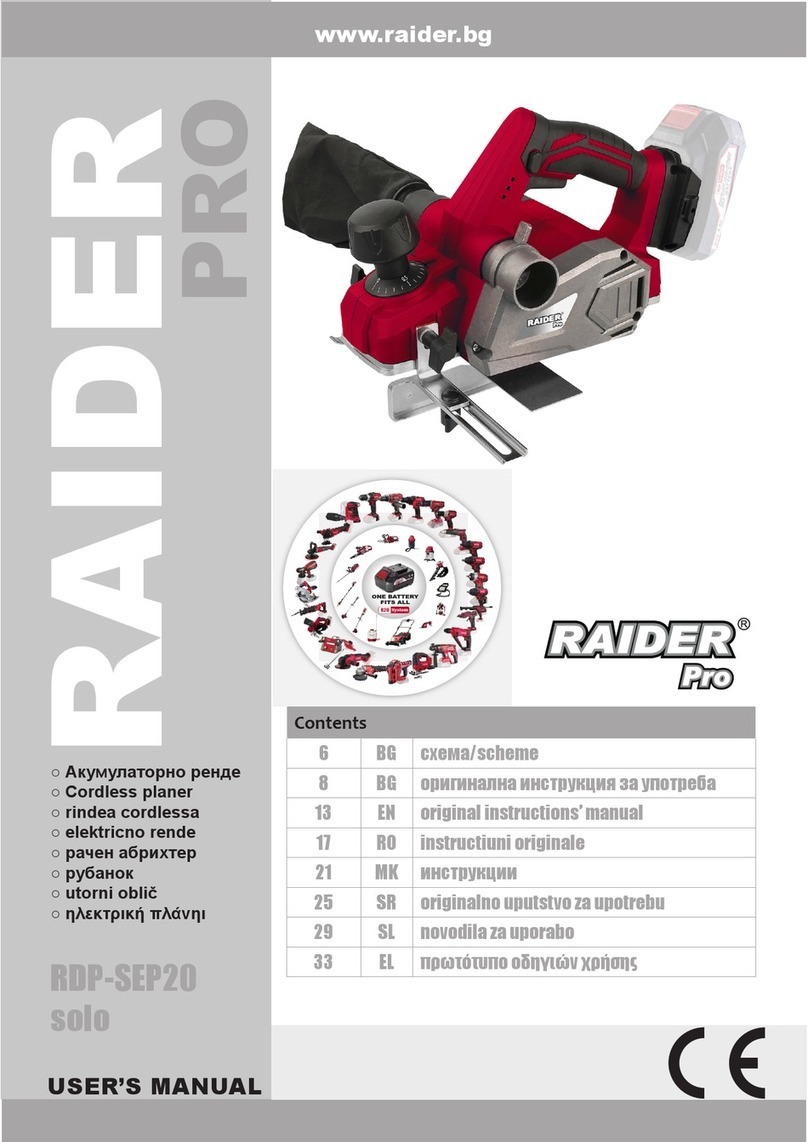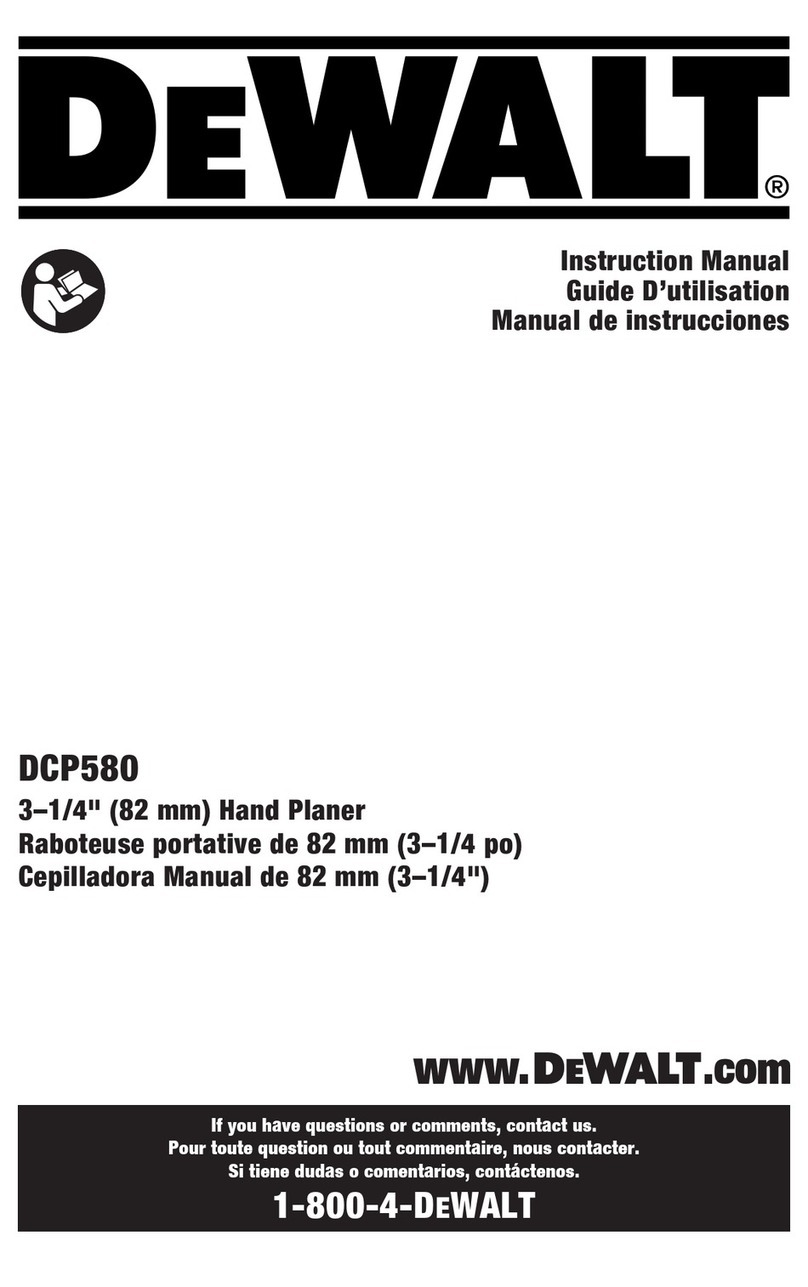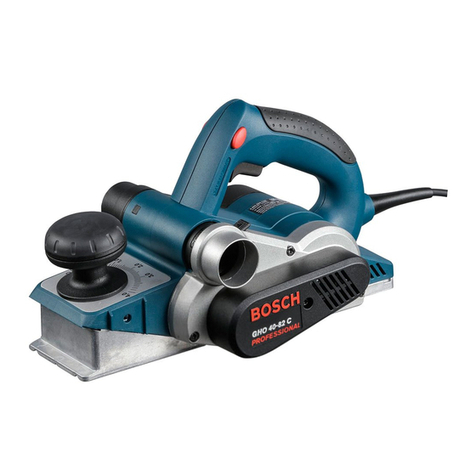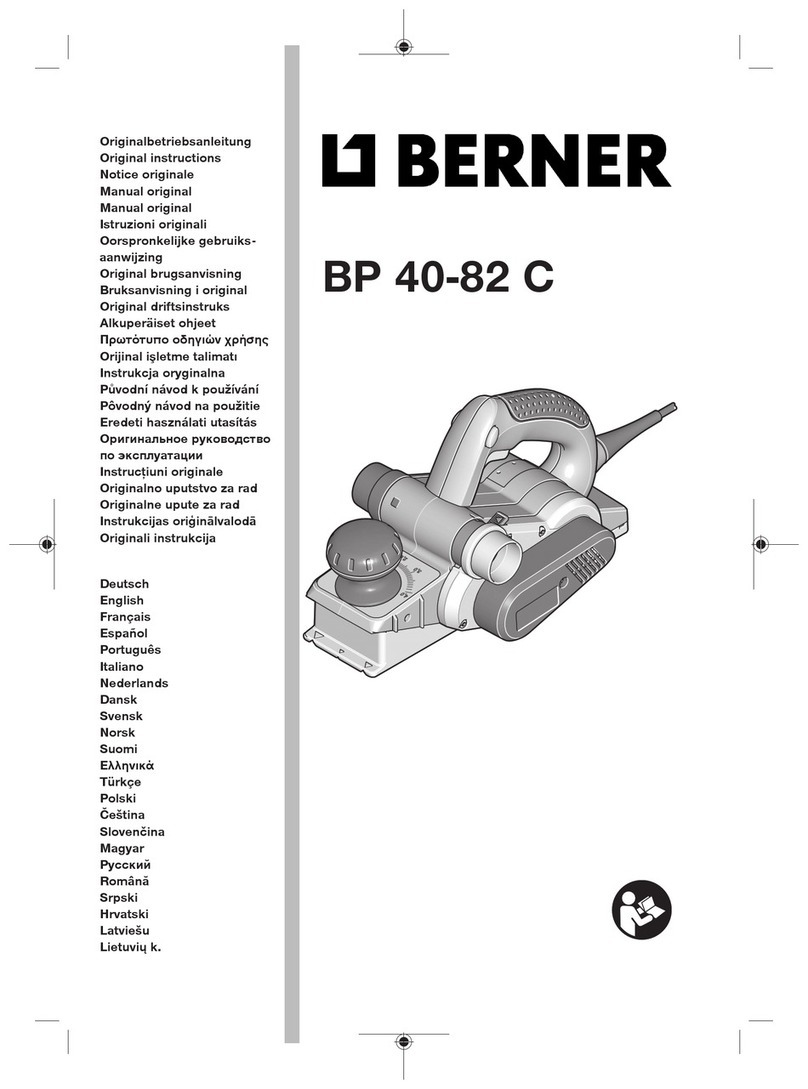Safety
2
or remove the battery pack, if detachable, from
the power tool before making any adjustments,
changing accessories, or storing power tools. Such
preventive safety measures reduce the risk of starting
the power tool accidentally.
■Store idle power tools out of the reach of children
and do not allow persons unfamiliar with the power
tool or these instructions to operate the power tool.
Power tools are dangerous in the hands of untrained
users.
■Maintain power tools and accessories. Check for
misalignment or binding of moving parts, breakage
of parts and any other condition that may affect the
power tool’s operation. If damaged, have the power
tool repaired before use. Many accidents are caused
by poorly maintained power tools.
■Keep cutting tools sharp and clean. Properly
maintained cutting tools with sharp cutting edges are
less likely to bind and are easier to control.
■Use the power tool, accessories and tool bits etc.
in accordance with these instructions, taking into
account the working conditions and the work to
be performed. Use of the power tool for operations
different from those intended could result in a
hazardous situation.
■Keep handles and grasping surfaces dry, clean
and free from oil and grease. Slippery handles and
grasping surfaces do not allow for safe handling and
control of the tool in unexpected situations.
SERVICE
■Have your power tool serviced by a qualified repair
person using only identical replacement parts.
This will ensure that the safety of the power tool is
maintained.
PLANER SAFETY WARNINGS
■Wait for the cutter to stop before setting the tool
down. An exposed rotating cutter may engage the
surface, leading to possible loss of control and serious
injury.
■Hold the power tool by insulated gripping surfaces,
because the cutter may contact its own cord.
Cutting a “live” wire may make exposed metal parts
of the power tool “live” and could give the operator an
electric shock.
■Use clamps or another practical way to secure and
support the workpiece to a stable platform. Holding
the workpiece by your hand or against the body leaves
it unstable and may lead to loss of control.
ADDITIONAL SAFETY RULES
■The dust produced when using this tool may be harmful
to health. Do not inhale the dust. Use a dust absorption
system and wear a suitable dust protection mask.
Remove deposited dust thoroughly, e.g., with a vacuum
cleaner.
■Do not remove splinters or saw dust while tool is
running.
■Only plane with sharp blades, avoid metals (nails,
screws). Check the workpiece before planing.
■Do not reach into the danger area of the tool when
plugged in.
■Place the front plate of the machine on to the workpiece
and switch on, before the planer blade touches the
workpiece and then guide evenly over the workpiece.
■The v-shape notch in the front of the supporting plate
ensures safe chamfering of edges.
KNOW YOUR PRODUCT
See page 5.
1. Lock-off button
2. Dust flow direction mark
3. Dust flow direction knob
4. Dust bag
5. Dust bag adaptor
6. Depth adjustment knob
7. Depth scale
8. Live tool indicator
9. Power cable
10. Dust outlet
11. Side fence knob
12. Side fence
13. Handle, insulated gripping surface
MAINTENANCE
■If the power supply cord is damaged, it must be replaced
only by the manufacturer or by an authorised service
centre to avoid risk. Contact authorised service centre.
■If the replacement of the supply cord is necessary, this
has to be done by the manufacturer or his agent in
order to avoid a safety hazard.
■The tool should never be connected to a power supply
when you are assembling parts, making adjustments,
cleaning, performing maintenance, or when the tool is
not in use. Disconnecting the tool will prevent accidental
starting that could cause serious injury.
■When servicing use only identical RYOBI replacement
parts. Use of any other parts may create a hazard or
cause product damage.
■Replace worn blades with new ones.
■Avoid using solvents when cleaning plastic parts. Most
plastics are susceptible to various types of commercial
solvents and may be damaged by their use. Use clean
cloths to remove dirt, carbon dust, etc.
■Do not at any time let brake fluids, gasoline, petroleum-
based products, penetrating oils come in contact with
plastic parts. They contain chemicals that can damage,
weaken or destroy plastic.
